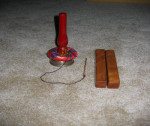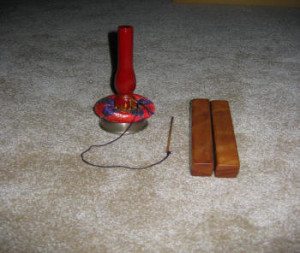Sesshin is the Japanese word that we use in the world of Zen for a meditation retreat. A sesshin may last one day, a weekend, three or four days, a week, a month, thirty days, ninety days, or more. Most are seven days.
A sesshin day typically begins before sunrise and ends after sunset. Starting at 5:00 a.m. and ending at 9:30 p.m. is not unusual. Zazen is the main activity of the day, together with dokusan which is offered several times per day. A Teisho, a work period, several rest periods, an exercise period, and meals complete the day.
Speaking silence is maintained at all times, with various bells being sounded to announce the beginning and ending of a kinhin, sitting, rest periods, meals, the beginning, continuation, and ending of dokusan, and so on. The han is also used at the beginning of a round of sitting, and some centers use drums as well.
An orientation that explains the meaning of the bells, the playing of the han, and other procedures begins each sesshin.
A sesshin can be rigorous; it requires stamina and should not be attempted by beginners. It is often referred to jokingly as Buddhist boot camp because it is physically harder than most other activities. It is harder to sit for half an hour or more without moving than it is to perform hard physical labor especially when the kinhin between each sitting is only six or seven minutes in length.
However, after we have endured a few sesshins, we begin to enjoy them and we look forward to the next one. One more attachment to drop! It feels good to be doing what we most want to do: To practice zazen intensely for extended periods of time. At last, we have the time to let our muddy water become clear.
I recall one sesshin in particular where I just could not get comfortable. Every sitting became painful; I remember my cushion felt like a cinder block and it really hurt to sit down. Each thirty five minute sitting seemed interminable. All I did was sit in pain and wait for the bell to ring. When it finally ended on a Sunday afternoon, I wrote it off as a disaster and went home.
When I woke up the next morning, I swung my feet over the side of the bed to stand up, and when they hit the floor I experienced a powerful samadhi. After returning to normal consciousness, I realized the sesshin had not been a waste of time after all.
Although one effect of that “bad” sesshin was experienced almost immediately after the sesshin had ended, the effects of a sesshin echo throughout eternity. That is the magic of sesshin. We can make no better use of our time than to participate whole-heartedly in a sesshin, even if it hurts.
Attending a sesshin is as close as most of us will ever get to the life of a monk or a nun. Eat Sleep Sit is a delightful book that shows us what a monk’s life in Japan is like.

